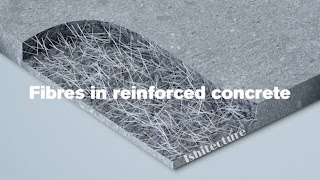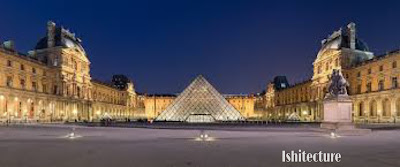In this world of daily new inventions, we discover new
materials very often. One such material is FRC (Fibre-Reinforced Concrete), it
contains fibrous materials (short discrete fibres uniformly distributed and
randomly oriented) which increases structural integrity.
Use of fibre for reinforcement has been continued since
Mesopotamian civilization, they used the straw to strengthen sun-baked bricks.
Horsehair was employed in mortar and straw in mud bricks. Asbestos fibres were
used in concrete in 1900. Researches continue even today to enhance the
standard of concrete and different types of fibres like steel fibres, glass
fibres, synthetic fibre (polypropylene and nylon fibres) and natural fibres
(coir and hay).
Fibres may be circular or flat. Continuous meshes, woven
fabrics and long wires or rods are not discrete fibres. FRC can be used
on-ground floors, pavements and might be deemed for construction parts alone or
hand-tied like beams, pliers, foundations, etc. It is more cost-effective than
hand-tied rebar and increases tensile strength many times.
The amount of fibres added is measured in percentage of the
entire volume of the composite which ranges from 0.1-3%. The aspect ratio of
the fibre is the ratio of length and diameter which is often from 30-150. The
shape, dimension and length of fibre are important. If the length is simply too
long, the fibre tends to ball and creates workability problems. If the modulus
of elasticity of the fibre is higher than the matrix (concrete or mortar
binder) then it helps to hold the load by increasing tensile strength.
An example can be of short hair-shaped glass fibre, which is
effective the first few hours after pouring the concrete and reduces cracking
while the concrete is stiffening but there is no increase in concrete tensile
strength.
EFFECTS OF FIBERS
Fibres control the plastic shrinkage and drying shrinkage in
concrete. It reduces permeability thus reducing bleeding of water. Some types
of fibres produce greater impact, abrasion and shatter resistance. But the
fibres don’t increase flexural strength so it cannot replace moment resisting
or structural steel reinforcement.
NECESSITY OF FIBRES
The fibres increase the tensile strength of concrete and
reduce air and water voids. It increases the durability of concrete.
Orientation and volume of fibres have a big influence on the creep performance
of rebars. Graphite and glass have excellent resistance to creep. Add small,
closely spaced and uniformly dispersed fibres to concrete for crack resistance.
Many new types of research are being carried out to develop
better materials. An FRC sub-category named High-Performance Fibre
Reinforcement Concrete (HPFRC) claims more resistance to cracking and is
lighter than traditional concrete. More studies are being conducted to induce
better material than we have got today, and who knows if the long run holds
some advanced materials which can take building construction to a brand new
level.






Well explained concrete materials
ReplyDelete